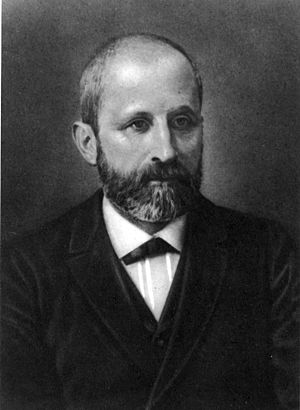Nucleic acid facts for kids
Nucleic acids are super important large molecules inside every living thing. Think of them as special instruction manuals that hold all the information about you! There are two main types: deoxyribonucleic acid, which you probably know as DNA, and ribonucleic acid, called RNA.
These amazing molecules store and help transfer genetic information from parents to their children. When a cell divides, its DNA is carefully copied. This copy then goes into the new cell, making sure the instructions are passed on correctly.
Contents
What Are Nucleic Acids?
Nucleic acids are like the blueprints of life. They contain all the instructions that tell a cell how to grow, work, and reproduce. Without them, life as we know it wouldn't exist!
Building Blocks: What Are Nucleotides?
Nucleic acids are built from smaller units called nucleotides. Imagine nucleotides as tiny LEGO bricks that link together to form a long chain. Each nucleotide brick has three main parts:
- A nitrogenous base: This is like the unique "code" part of the brick. There are different types, like A, T, C, and G in DNA.
- A sugar molecule: This sugar has five carbon atoms and acts as a connector.
- A phosphate group: This part helps link the nucleotides together in a chain.
DNA and RNA: The Two Main Types
DNA and RNA are both nucleic acids, but they have different jobs and structures.
- DNA is usually found inside the nucleus of our cells. It's like the master instruction book, holding all the genetic code for an organism. DNA is organized into structures called chromosomes.
- RNA is more like a helper molecule. It carries out different tasks based on the instructions from DNA.
How Genetic Information Is Passed On
One of the most important jobs of nucleic acids is to make sure genetic information moves from one generation to the next. When a cell gets ready to divide, its DNA makes a perfect copy of itself. This way, each new cell gets a complete set of instructions. This process is how traits are passed down from parents to their offspring.
DNA's Job: Carrying the Genetic Code
DNA's main role in every cell is to store the sequence of bases. These bases are like letters that spell out genetic messages. These messages are then copied into RNA. Think of DNA as the main library where all the original, important books are kept safe.
RNA's Many Roles
RNA has many different jobs. One well-known type is messenger RNA, or mRNA. mRNA carries the instructions from DNA to other parts of the cell. These instructions are then translated to build proteins. Proteins are like the workers of the cell, doing most of the important jobs, such as being enzymes that speed up chemical reactions.
But there are other types of RNA too! These are called non-coding RNAs. They don't make proteins but have other important roles in how cells work and how genes are controlled.
See also
 In Spanish: Ácido nucleico para niños
In Spanish: Ácido nucleico para niños


